ShipBob simplifies ecommerce fulfillment as it supports dropshipping from multiple channels and integrates with Amazon. Request a free quote and unlock two-day free shipping today.
Amazon FBA and dropshipping are two of the most popular fulfillment options for online sellers. While the two may seem similar at first glance, they’re actually very different. So whether you’re new to ecommerce or simply looking for an alternative fulfillment option, this guide has you covered. We’ll compare the key differences between Amazon FBA and dropshipping so you can determine which one is right for your business.
The 5 Best Ecommerce Fulfillment Services For Selling Online
Our team here at Quick Sprout has researched and identified the best fulfillment solutions for ecommerce. Here’s a quick summary of our top recommendations:
- ShipBob – Best ecommerce fulfillment platform
- Red Stag Fulfillment – Best for high-value and large products
- ShipMonk – Best for subscription boxes
- Dot Foods – Best for food and beverage ecommerce
- Easyship – Best for international fulfillment
1. Costs
The upfront investment cost is the first thing you need to consider when evaluating Amazon FBA vs. dropshipping.
Amazon FBA requires a significantly larger investment than dropshipping. That’s why this option is typically better for existing businesses that are already profitable and have cash in the bank to buy inventory.
Amazon FBA is more expensive than dropshipping because it requires you to purchase your inventory in advance. With dropshipping, you’re not paying for any inventory upfront—you only pay for items once a customer makes a purchase.
Getting the lowest possible rate per unit on your inventory typically requires bulk purchases. So you may need to purchase hundreds or thousands of items at once, which can cost you thousands or tens of thousands, depending on what you’re selling.
In addition to purchasing inventory, Amazon FBA charges for inventory storage, fulfillment fees, return processing fees, and more. There’s also a $39.99 monthly fee for the Professional seller plan.
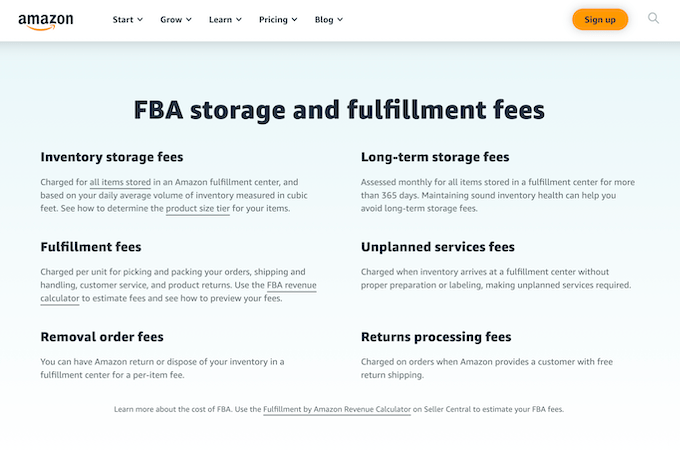
So right off the bat, if you don’t have the funds to purchase inventory in bulk, then Amazon FBA may not be right for you.
You’re also capped at 1,000 units of storage with Amazon FBA, meaning you may need to find a secondary storage facility to keep your overflow.
The overhead costs associated with dropshipping are significantly lower. You just need to pay for the website expenses and ecommerce platform. You can get all of this set up for less than a couple hundred dollars, and the ongoing costs will likely be under $100 per month.
Dropshipping doesn’t require any pre-payments for inventory. When someone buys something from your ecommerce shop, you just get charged for the items sold by your supplier.
2. Logistics
With dropshipping, you never need to touch your products. You don’t own or stock the inventory; you’re simply a middleman between the supplier and the customer.
After an item is purchased from your site, you need to notify the supplier of the order details, and they’ll ship directly to your customer. This process can be automated, so you won’t have to manually notify your supplier after every order.
The logistics for dropshipping are very simple, and the effort is minimal compared to alternative fulfillment solutions.
With Amazon FBA, there’s an extra step in the process that does require a little more legwork.
Your supplier isn’t shipping directly to the end customer. Instead, you need to purchase the inventory and then send that inventory to an Amazon fulfillment center.
It’s your responsibility to ensure all products are packed, shipped, and routed to the fulfillment centers per Amazon’s guidelines. Products must be labeled correctly, have the right barcodes, and adhere to dozens of other strict rules and requirements. This can be tedious when you’re first starting out, but you’ll get the hang of it as time goes on.
If the Amazon FBA requirements don’t work well for your products or business, there are other fulfillment services that you can consider. ShipBob is an omnichannel fulfillment solution that offers two-day free shipping and simple inventory storage.
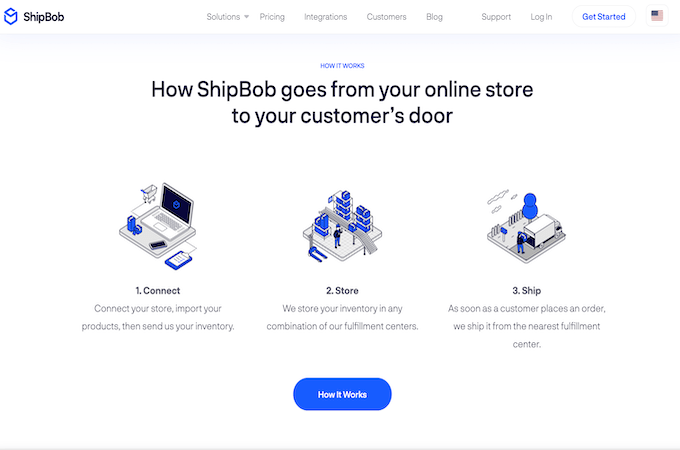
The logistics are straightforward, and ShipBob syncs with your sales channels. So, whether you’re selling through your website, Facebook, or Amazon, they’ll be notified of the details and ship directly to your customers.
3. Returns and Customer Support
Dealing with customers is an important aspect of running any ecommerce business, and returns are just part of the game when you’re selling online. Both of these elements are handled differently for Amazon FBA and dropshipping.
Amazon FBA manages returns and customer support for you. If customers have questions about the status of an order or need to set up a return, everything is handled directly through Amazon.
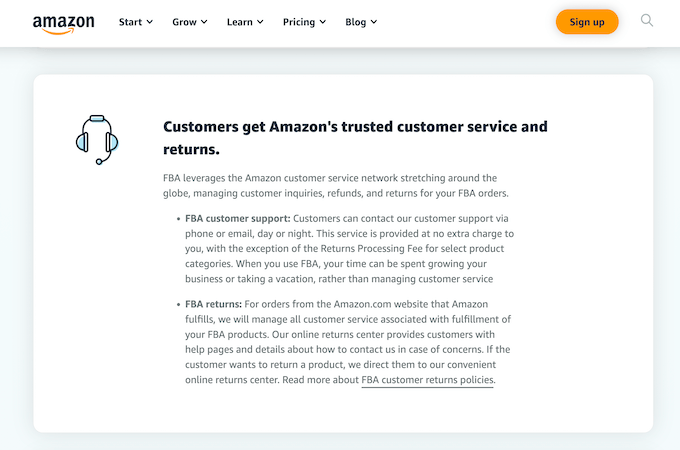
Will you have to answer any questions sent to your seller profile? Sure. But that’s relatively easy and doesn’t require too much work. It barely falls under the scope of “customer support.”
As a dropshipper, you’ll have to handle all returns and support on your own. This may require you to get customer service software for your website to manage tickets, returns, and live chat. You’ll also have to figure out how you’ll handle return logistics.
Return arrangements can vary based on different suppliers and the types of products you’re selling. In some cases, the cost associated with a return isn’t worth it for sellers, and you might be better off just refunding your customers or shipping them a brand-new item.
You’ll have to crunch the numbers and see what kind of offers or guarantees you’re getting from your suppliers. But for low-ticket items, you may ultimately choose not to accept the items back to save money and avoid logistical headaches.
4. Profitability
Dropshipping offers a faster path to profitability. Since your overhead costs are so low and you’re not paying for inventory, you can potentially turn a profit with your first sale. At worst, it will take you a handful of conversions to cover the costs of running your website.
With that said, dropshipping profits might be slim. This all depends on how well you can find suppliers offering good prices and how well you do with pricing and marketing. But generally speaking, the profit margins are lower with dropshipping because you’re not getting bulk inventory prices.
Amazon FBA allows you to earn higher margins per item sold, but it may take longer to break even.
For example, let’s say 1,000 units at an Amazon warehouse that you’re selling via Amazon FBA. Your breakeven point might be 600 units. This could take months for you to reach, but the total profit on your 1,000 units can be high once you break even—potentially higher than selling the same 1,000 units via dropshipping.
5. Competition
There’s always going to be competition when you’re selling online, regardless of the method. But the type of competition you’ll have will vary depending on your fulfillment method.
If you’re using Amazon FBA, there’s a good chance you’ll want to be selling on Amazon. Depending on your products, you could have high competition here. That’s because people won’t necessarily be searching directly for your specific brand and product. Instead, they’ll search for broad terms and then compare the options.
This means that your products will be showcased side-by-side with your competitors. Customers will have a quick, at-a-glance view of what you’re selling, along with the price and rating. So if you’re not competitively priced or your ratings are subpar, it could be difficult to stand out from other options on the platform.
You might also find yourself in direct competition with Amazon, as Amazon has its own brand of products. It’s common for these Amazon-branded products to appear first in the search results, right alongside the sponsored products.
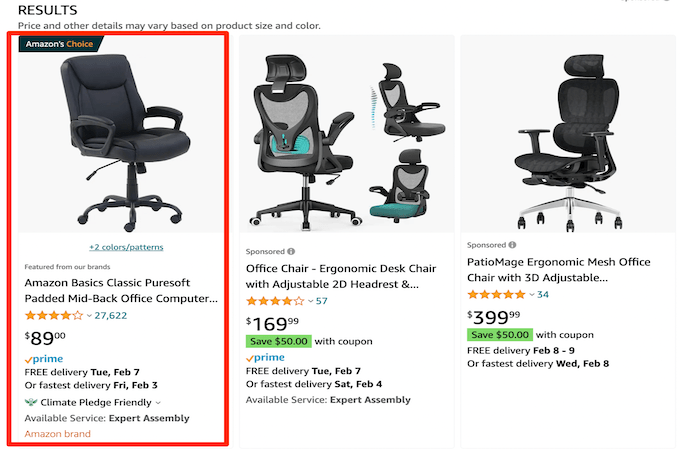
If you’re dropshipping, you’re still going to have competition. But you’ll be competing with other brands on different channels. To gain the edge here, you need to be good at SEO and learn how to market your products to prospects.
One method isn’t necessarily easier than the other. It’s just all about the path you prefer to take.
The cool part about using an omnichannel fulfillment option like ShipBob is that your fulfillment can be handled regardless of where you’re selling. So if you want to sell through Amazon, ShipBob can still handle your fulfillment.
But if you also want to sell on your website or through third-party channels like Facebook or Walmart, everything can be handled from a single fulfillment service. This helps you stand out from competitors on every channel and benefit from ShipBob’s two-day shipping.
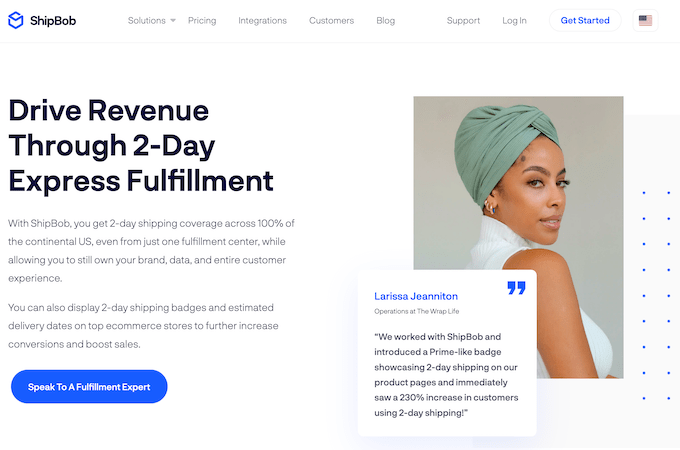
In short, Amazon FBA isn’t the only way to provide fast shipping. So you can stay competitive no matter where you’re selling.
6. Brand Control
Dropshipping gives you much more control over your brand. If you’re not selling on Amazon, you can essentially do whatever you want with your website and sales channels.
This takes a bit more work than simply having an Amazon seller profile, but it’s great for businesses that want to be unique.
Since Amazon FBA has such strict packaging requirements, shipping products to customers in custom-branded boxes is harder. It’s possible, but it’s likely in your best interest to let Amazon handle this for you, and your products will be delivered in Amazon’s packaging. Otherwise, you’ll have to do more legwork before shipping your inventory to an Amazon fulfillment center.
Alternatively, other fulfillment solutions on the market have better brand customization options than Amazon FBA. ShipBob gives you full control over your boxing and packaging, so customers are immersed in your brand image when deliveries arrive at their doors.
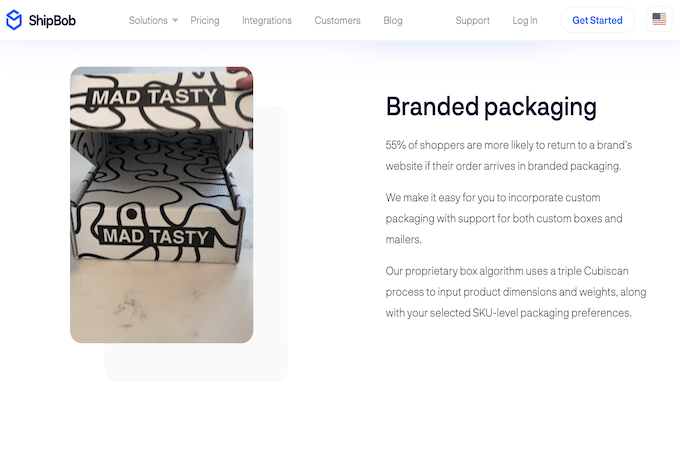
ShipBob also offers customized kitting, marketing inserts, custom notes, and other enhancements to truly make your packages unique. Custom order labels and custom-branded boxes are offered at no additional cost.
If you care about the unboxing experience for your customers, this will likely be a better option than Amazon FBA.
The Similarities Between Amazon FBA and Dropshipping
Contrary to popular belief, you can use Amazon FBA even if you’re not selling through Amazon’s marketplace. So one similarity between Amazon FBA and dropshipping is that both can be used for omnichannel ecommerce, including sales directly from your website.
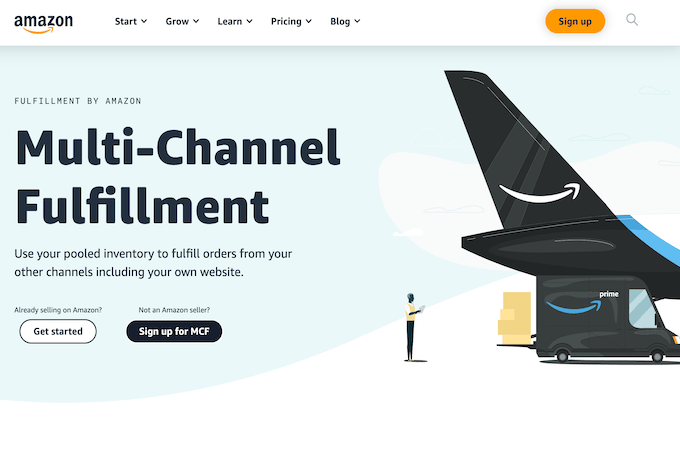
It’s also possible to sell products via Amazon using dropshipping—without having to go through Amazon FBA.
Both Amazon FBA and dropshipping give you total control over your customer price points. So while your costs may vary based on your logistics, you still have the final say over the sales price of your products.
You don’t fulfill orders or ship products to customers with either of these methods. If you’re using Amazon FBA, the shipment is coming from an Amazon fulfillment center. If you’re using dropshipping, fulfillment and shipping are handled by your supplier.
Final Thoughts About Amazon FBA vs. Dropshipping
Amazon FBA and dropshipping can both be lucrative options for online sellers. Generally speaking, Amazon FBA is better for brands that already have cash flow and either want to expand sales channels or improve fulfillment processes. Dropshipping is a safer and more cost-effective alternative for people new to selling online.
Dropshipping offers more flexibility for those who want more control over their brand. Just remember that you’d need to handle customer service independently if you go this route, whereas Amazon FBA would handle support and returns for you.
If it sounds like dropshipping is right for you, check out our step-by-step guide to starting a dropshipping business. For help finding suppliers and managing your operations, we also have in-depth reviews of the best dropshipping companies. These resources will help set your business up for success.
